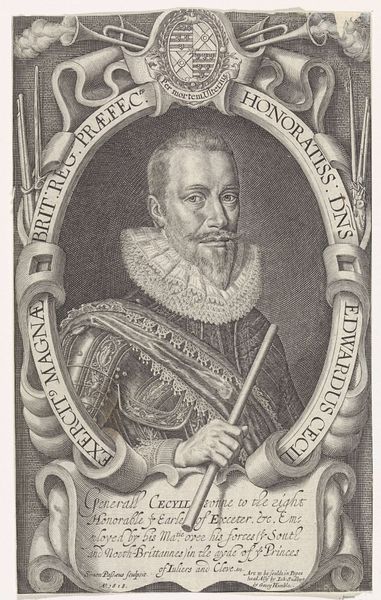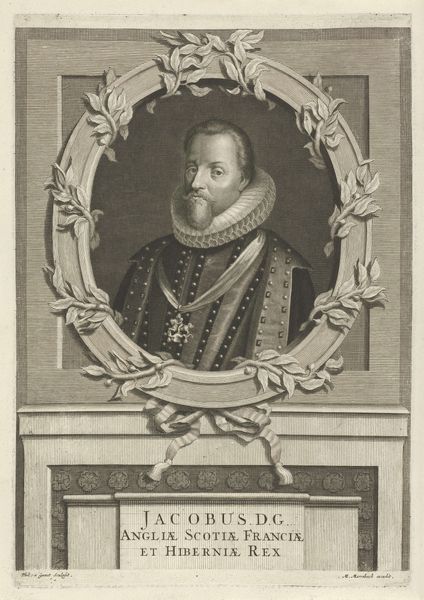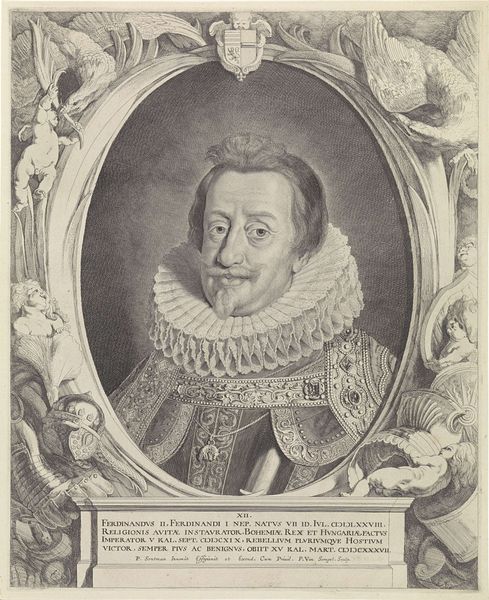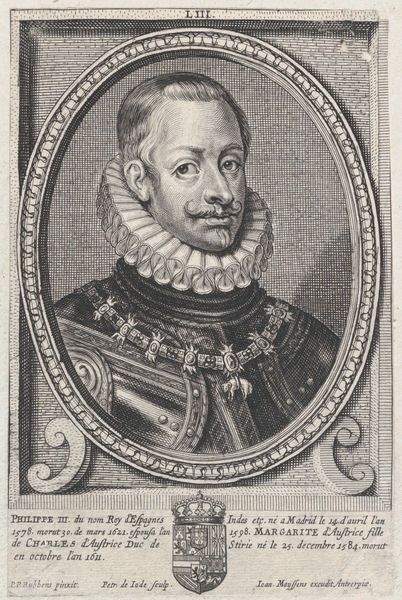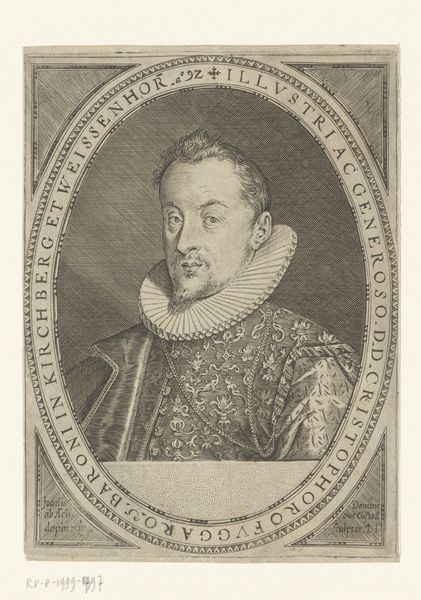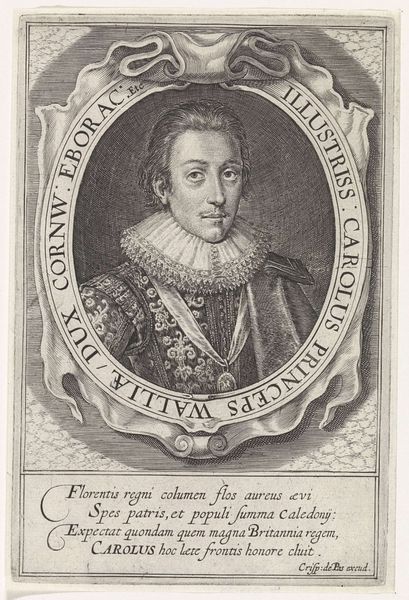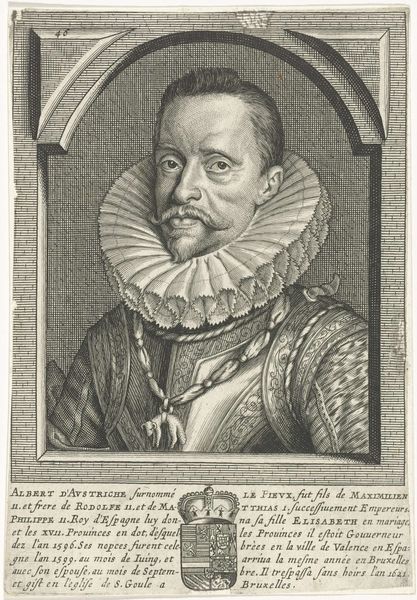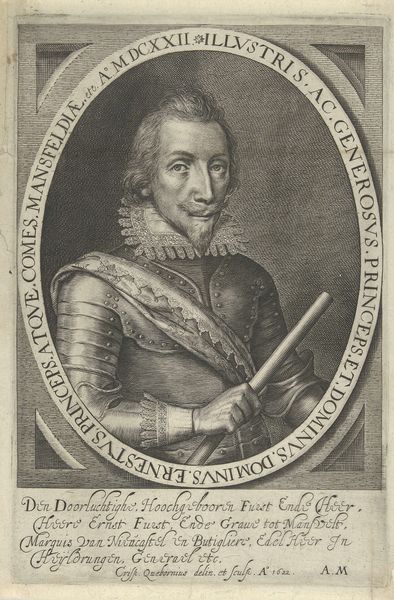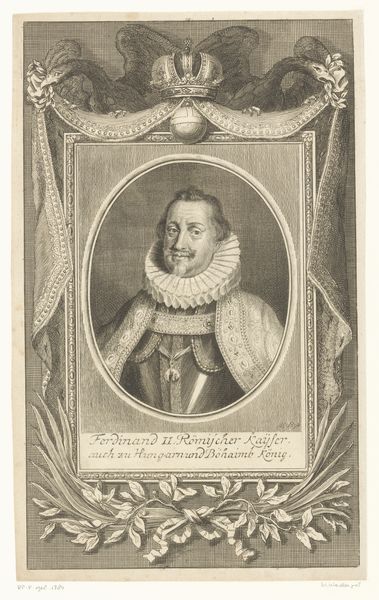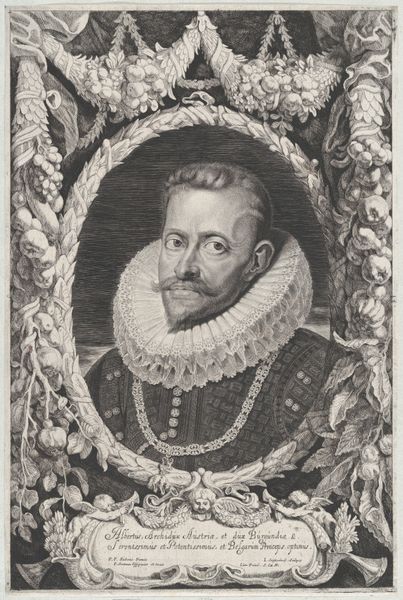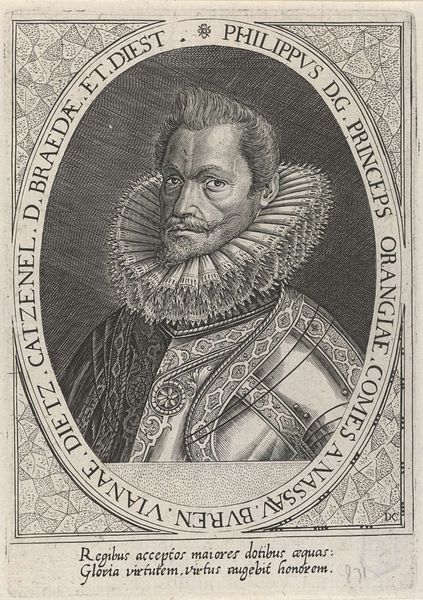
print, engraving
#
portrait
#
baroque
# print
#
history-painting
#
engraving
Dimensions: height 409 mm, width 284 mm
Copyright: Rijks Museum: Open Domain
Curator: This is Jonas Suyderhoef's "Portret van koning Filips III van Spanje," an engraving from sometime between 1644 and 1650. Editor: My eye is immediately drawn to the intricate detail. The texture of the lace collar alone is incredible, particularly given the constraints of printmaking. Curator: Absolutely. The print medium allowed for wide dissemination of royal portraits, solidifying the king’s image and power. Prints were cheaper than painted portraits and facilitated an expanding visual culture during the Baroque era. Editor: Indeed, and look at the way the armor is rendered. The lines aren't just descriptive; they convey a sense of weight and coldness to the material. I’m also intrigued by the decorative elements framing the portrait. The abundance feels like an effort to elevate the subject. What are your thoughts? Curator: Well, those garlands and trumpets serve as symbols of triumph and prosperity, elements carefully constructed to project royal authority and reinforce the narrative of the king's reign. Editor: Right, everything down to the inscription is curated to communicate status. I keep thinking about the hands involved, the skilled engravers reproducing and elaborating on existing images for broader consumption. There's so much labor embedded in this object. Curator: Exactly. Printmaking democratized art to a degree, even as it upheld social hierarchies through portraiture of powerful figures. It's a complex interplay between production, accessibility, and the dissemination of political imagery. Editor: It really highlights how much work goes into constructing even a reproduced image of power. Fascinating how it’s at once an intimate likeness and a constructed symbol. Curator: Yes, it's a testament to the layered meanings embedded in seemingly straightforward representations of authority, revealing how art operates within a network of social and political forces. Editor: Reflecting on Suyderhoef’s rendering makes me reconsider my appreciation for prints and drawings. I’ll need to dive deeper into their modes of making. Curator: The portrait serves as a visual artifact documenting the intertwined relationship between art, power, and the social forces that shape their creation and consumption.
Comments
No comments
Be the first to comment and join the conversation on the ultimate creative platform.
